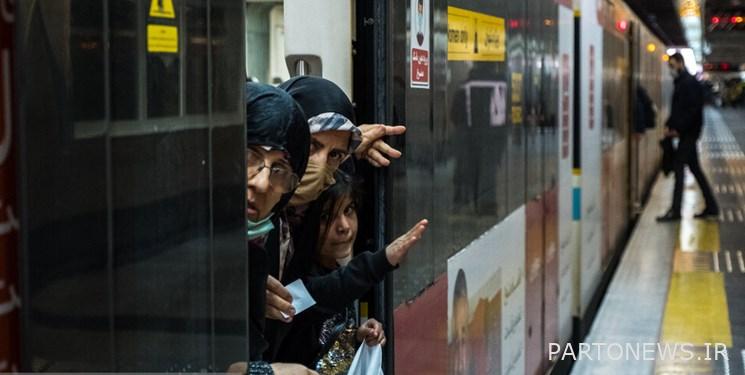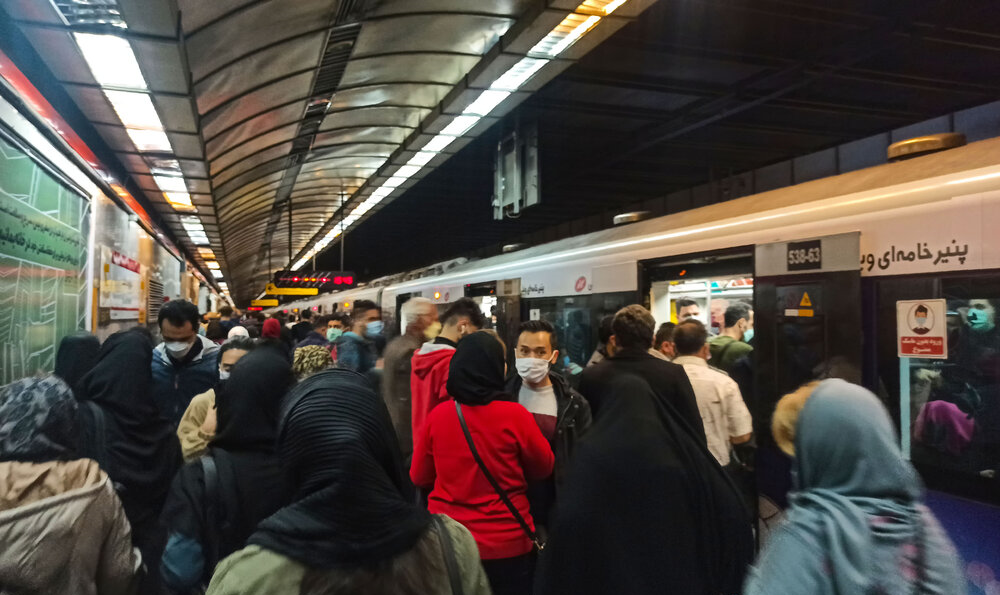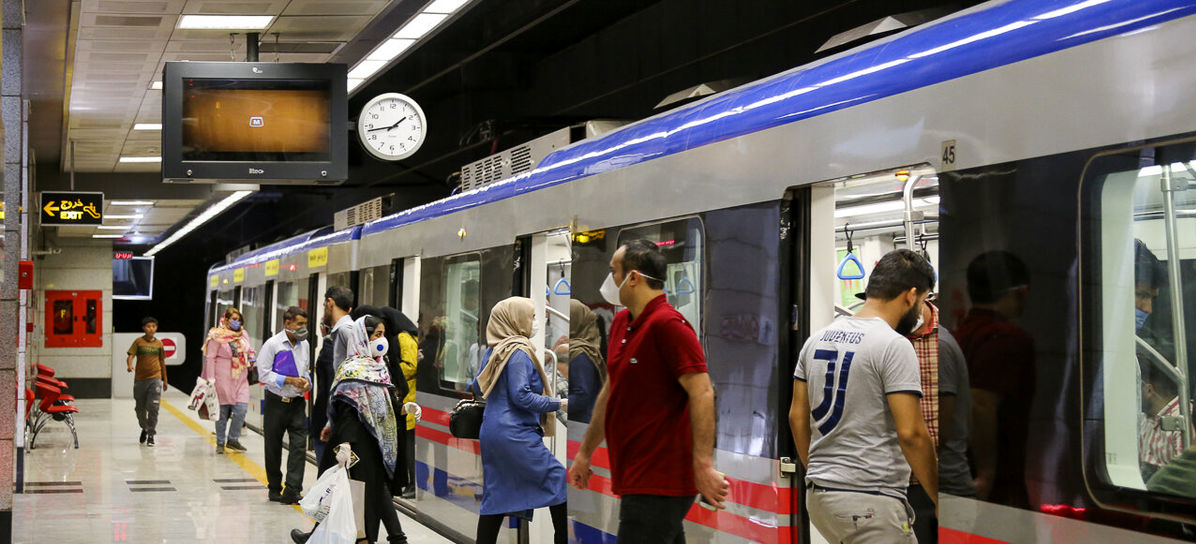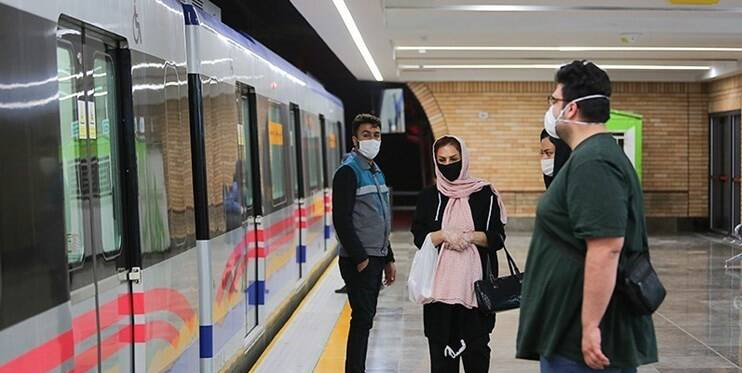What do women say about the lack of space for women in the subway?

Life Group; Zeinab Nadali: I have been using the subway for about a year now. Sadeghieh, Kolahdooz, Farhangsara, etc. It does not matter, I went through all these lines and in all of them, without exception, I faced a serious problem. At first glance, the crowded subway, corona and peddlers may be the main problems of using the subway, but the more serious issue is “the presence of men in women’s carriages.”
Many times, due to the crowded subway and the presence of men in women’s wagons, I stopped getting on the train and waited for the next train in a hurry. Of course, the next trains were no less!
At 9 o’clock in the morning, as usual, I enter the subway. I take the honest line and go to the wagons for women. A large yellow ribbon on the wall and floor reads “for women.” However, a few gentlemen pass through the yellow ribbon and wait for the train in the women’s section.
I ask one of the gentlemen, “Excuse me, sir, do you not see the yellow bar?” He turns his head, looks at me and says nothing. Before I can say anything again, one of the salesmen stops me and says, “Let go, you can not do anything. Do not get involved, they say something and you get upset. I myself witnessed some of these women arguing with men, and the last one did not come to fruition. “Only you will be upset and your dignity will be violated.”

I’m going to the subway officer. I point to the gentlemen and say, “I think these gentlemen need to be warned. “This is a wagon for women, not men!” The subway officer says he can not do anything and they do not listen to him. Then, in order to prove his point, he says, “Sir, please go over there.” Nobody listens to him. I’m surprised that his duty officer is a reminder and if someone does not listen, he deserves to be punished. Not to mention the whole carefree.
Out of 7 subway carriages, one and a half carriages are assigned to women from the front and one and a half carriages from the rear, and it is engraved on the glass in bold on the entrance door of the separated sections. ». This means that more than half of the subway trains are for men and little space is reserved for women. However, during busy times or even when the subway is quiet, men also occupy the same few wagons.

The train arrives and I get on. There is no place to sit. I follow the path of some gentlemen who enter the wagon with us and stand in a corner. Following their arrival, I am also protesting calmly. A few women standing next to me hear and their hearts open.

“Once a few boys and girls got on board,” said one woman. The subway was also crowded. I waited for the train to arrive at the station and then respectfully told the boys to please get off. The girls held hands and said, “What does it matter to you? We are engaged and we want to be together.” I also said that your husband is not six at all, but this is a public instrument. “Finally, they said if you get upset, get off!”
A young girl interrupts and says, “Until it gets a little crowded, the gentlemen come and get in the ladies’ car sooner than us. It is interesting that they also sit on a chair and when you protest, they say rudely, “How do you get in the gentlemen’s wagon?” “They do not realize at all that poor women go there because of the small size of the wagons, not out of stubbornness!”
This is almost the concern of most of the women around me, says one of the veiled women: But when it gets crowded it is really awful or when the train brakes. “Once I could not keep my balance and I hit one of the gentlemen.”
“It’s normal,” says another person sitting in a chair, watching us from the beginning of the discussion. No one is talking or talking, not even the subway officers. “Women have always been abused in the subway.”

The train passes through several stations. People come and go. In the meantime, our debate is still ongoing. “I got in the gentlemen’s car several times when it was crowded,” said the woman who had just boarded. I admit it is wrong, but women’s wagons are really few while both sexes are employed and their commutes are high. “If we ride in men’s wagons, it is to protest the lack of space for women, not the stubbornness that leads men to enter our wagons.”
The women complained about the lack of their own space and the presence of men in the women’s carriage. So much so that they wanted the agents to deal with the gentlemen. There was a demand for more wagons for women.

Tehran Metro Company is obliged to prevent men from entering women’s wagons due to religious issues and personal rights of individuals, and in return to prevent women from entering men’s wagons, and to allocate more wagons to women. However, the subway has the potential to do so, and even subway officers are stationed on site. It is enough for the officers to warn the citizens to stand behind the yellow line and remind them that each person should ride in his own wagon.
This inconsistency and the issue that has caused the dissatisfaction of both sexes is not a problem that has a complex solution or the need for infrastructure that will delay the resolution of this issue for a long time. More and more serious monitoring of metro officials and reminding them that the metro is not a family one can be a solution to this challenge, which we hope will be on the agenda as soon as possible.
End of message /
You can edit this post
Suggest this for the front page

